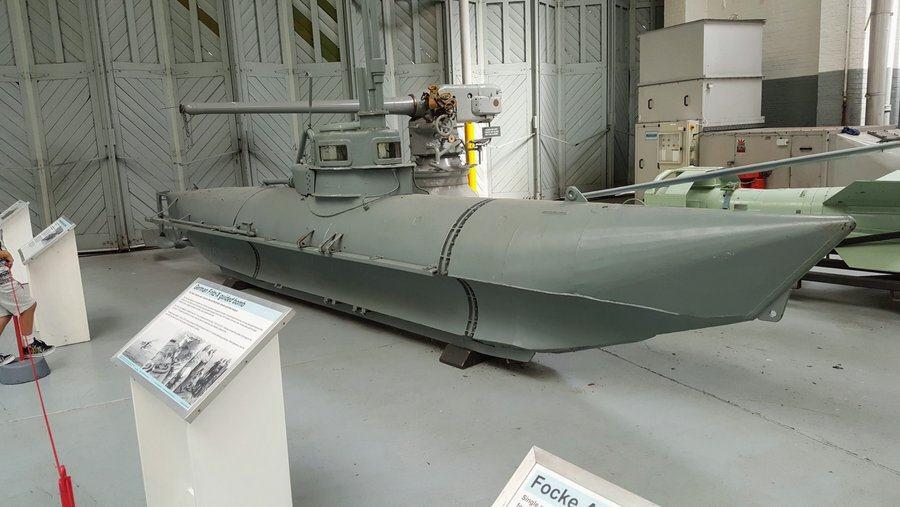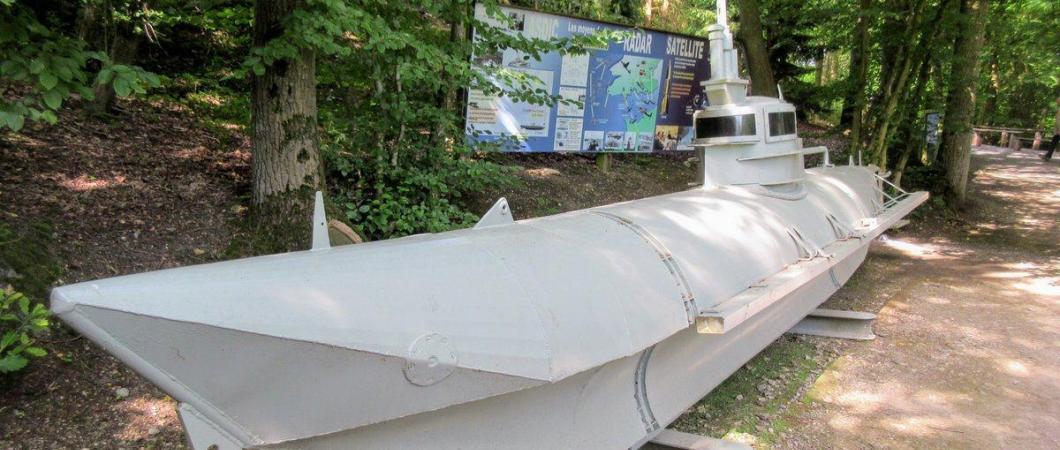The Biber (“Beaver”) midget submarine was not Germany’s most successful weapon in WW2.
Designed hastily in Feb 1944 in a bid to compensate for the horrendous losses in the U-boat fleet, and in anticipation of an imminent Allied invasion, the Biber was a cheap, one-man submarine, capable of carrying two torpedoes mounted externally in the curved resesses.
A 32hp Opel petrol engine powered the submarine on the surface for up to 100 nautical miles at a speed of 6.5 knots, and recharged its batteries. Once dived (to a max 65ft), its 13hp electric motor could drive it at 5 knots for 8 nautical miles.
The trouble was, they were hard to control and the war record of the 324 Bibers built, was not great.
The first Biber operation, at the end of Aug 1944 from Fécamp harbour was a hopeless failure. Of 22 boats launched only 14 made it out of the harbour and only two reached their objective.
In Dec 44, eighteen Bibers were sent to attack shipping bound for Antwerp. Only one returned. Though the operation resulted in the Bibers’ only ‘kill’ – an American cargo ship, MV Alan A. Dale. Over the next 3 days a further 14 Bibers were lost in the Scheldt.
The same fate befell most of the brave Biber operators in operations on the coasts of Norway, Denmark, France, Belgium, the Mediterranean and the Netherlands.
The most famous loss was Biber No. 90, which can be seen at IWM Duxford.

It was found sinking in the English Channel on 29 Dec 1944. Its ‘pilot’, who had died of carbon monoxide poisoning, turned out to be Joachim Langsdorff – the son of Captain Hans Langsdorff of the pocket battleship, Admiral Graf Spee.
The Biber in the feature photo is to be found in the woods at the Blockhaus d’Éperlecques in Pas-de-Calais, northern France.







